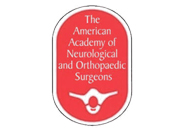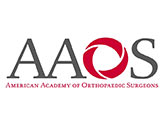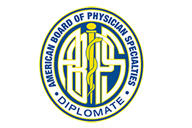Lower Limb Deformity Correction
Complex deformities of the limbs cause significant derangement in the shape of limbs. These conditions significantly affect the individual's ability to perform daily activities and may cause a permanent disability.
Some common complex deformities of the lower limbs include:
- Congenital talipus equino varus: Congenital talipus equino varus, commonly called club foot is a common congenital deformity where in one or both the feet are turned towards an inward and downward position.
- Congenital genu recurvatum, genu varus: Genu recurvatum is also called bow knees, back knee, or knee hyperextension. It is a deformity in the knees where the knees bend backward.
- Congenital pseudoarthrosis of tibia: It is commonly called bowed legs and is a condition of bowing of the tibia, one of the larger and stronger bones of the leg, in which the knees stay wide apart. It is common in infants and the bowed legs straighten as the child grows. However if the bowed legs continue beyond the age of 3 years, the condition requires medical intervention.
- Genu valgum: Also known as knocked knees, this is a condition where the knees bend inward touching each other while the ankles stay apart giving the appearance of the legs turned inward.
- Limb length discrepancy: Limb length discrepancy is a condition of unequalled leg lengths where one leg will be shorter than the other.
- Congenital short femur: A condition present at birth with an abnormally short thigh bone.
- Congenital hip dislocation: It is a condition of abnormal formation of the hip joint where the femoral head remains unstable in the acetabulum.
- Pediatric flat foot: Pediatric flat foot is a deformity of the feet in which the arch, which runs lengthwise along the sole of the feet, has collapsed to the ground or has not formed at all and the foot remains flat rather than arched as in normal feet.
- Fibular hemimelia: It is a condition of short or complete absence of the fibula, the outer of the two bones of the lower leg.
These complex deformities require surgical correction which may be done by different methods. Depending on the complexity, the conditions can be treated by two methods, open reduction and closed reduction. In open reduction, the surgeon makes an incision on the skin directly and inserts internal fixators. In closed reduction, external fixators are used without making any incision.
Some of the surgical methods include:
External fixation: In this method, the surgeon places external fixators such as pins or screws into the fractured bone on either side of pelvis. These pins are then connected to clamps or rods outside the skin which will form an external frame that will bring about stability and allow the bone to heal.
Internal fixation: In this method, your surgeon makes an incision on the injured areas and inserts internal fixators such as wires, screws, pins, or plates. These internal fixators are fixed either in front of the pelvis or at the back. This helps to prevent further injury like arthritis and also prevents displacement of the bone. Your doctor may suggest using crutches and avoid weight-bearing activities or physical work for a few weeks to allow the bones to join.
Ilizarov Method: The Ilizarov method is a minimally invasive procedure where correction of deformities can be done using the circular ring fixator. The Ilizarov procedure is done in 3 phases:
- Operative phase:In this phase, "K" wires are passed through the bones proximal and distal to the deformity and then fixed to the Ilizarov rings using wire fixation bolts. Then the rings are connected by hinges and threaded rods.
- Distraction phase:This phase is started after 10 days of the operative phase where twists or pressure is applied that stimulates the new bone growth. Bone growth of 3 mm/day may be possible and the distraction phase is continued until the deformity is corrected. Once the deformity is fully corrected, the apparatus is locked.
- Consolidation phase:It is the period between the locking of the apparatus and the completion of solid bone formation which may takes about 2-3 months. Once the bone is solid, the Ilizarov ring fixations will be removed. The patient is mobilized initially for partial weight bearing and later to full weight bearing with support. After removal, a cast made of plaster of Paris (POP) is placed for a month for protection.
Ilizarov apparatus
An Ilizarov apparatus is an orthopaedic device used to stimulate bone growth and is generally used to lengthen and straighten the extremities. It may also be used to treat complex and/or open bone fractures and in cases of infected non-union of bones that are not responsive to other techniques. The apparatus was named after its inventor, a Siberian orthopaedic surgeon named ‘Gavriil Abramovich Ilizarov’. The Ilizarov fixator uses the principle of distraction osteogenesis which refers to the pulling apart of bone to stimulate new bone growth through neovascularisation.
Indications
The Ilizarov apparatus is used in the following conditions:
- Treatment of bone infections
- Dwarfism – to increase the length of the extremities
- Poliomyelitis – to lengthen the limb and correct deformities
- In cases of acute fractures, mal-unions, and non-unions
- Correction of both congenital and acquired limb deformities
- Comminuted or segmental limb fractures
- Lengthening of foot and limb stumps
Structure and function:
The Ilizarov apparatus is a set of external fixators consisting of rods, rings, and Kirschner’s wires. It is cylindrical in shape and encircles the limb using wires to connect the bone to the rings.
The apparatus functions by transferring force to the top rings of the outer frame and bypassing the fracture site. The force is then transferred back to the healthy bone through the tensioned wires and circular construction of the apparatus. This structure of the Ilizarov apparatus helps to both immobilize the fracture site and relieve stress over the fracture.
Surgical Procedure
Patients undergo surgery to attach the Ilizarov fixator to the limb to be treated. This procedure is also referred to as transosseous osteosynthesis. Wires are passed by the surgeon through the skin and into the bone with the help of a drill. The protruding ends of these wires are then fixed to the external rings with special ‘wire fixation’ bolts. Thin threaded rods are used to connect and fix the rings to one another. The fixed Ilizarov device provides stability and supports the affected limb.
Following this, a Corticotomy or osteotomy (cutting of the bone) is performed to stimulate osteogenesis or formation of new bone. You will be instructed to make adjustments by turning the nuts on the rods four times a day. This is called "distraction" and produces tension between the bone fragments and stimulates the bone to grow back together gradually into a complete but longer bone. Once the bone is solid, the Ilizarov ring fixations are removed by the surgeon.
Advantages:
Some of the advantages of Ilizarov apparatus include:
- Low incident rates of infection, hemorrhage, and tissue trauma when compared to the traditional method as it is an incision-free technique.
- It is a minimally invasive technique with only wires used to fix the bones to the rings causing minimal soft tissue damage.
- The cylindrical shape of the apparatus enables correction of the deformities in 3-dimensions simultaneously enhancing the versatility of the fixator.
- No immobilization (means the patient can move throughout the treatment), so less chance of contractures and joint stiffness problems.
- Short-term inpatient hospitalization
Taylor Spatial Frame (TSF)
The Taylor Spatial Frame (TSF) is an external orthopaedic device used in the correction of limbs; either lengthening or straightening that is based on the Ilizarov method of limb deformity correction. This fixator stimulates the growth of new bone and allows the surgeon to accurately orient and align bones according to its specific anatomic location.
The modern TSF is a hexapod device and was named after its inventor, Dr. Charles Taylor, an orthopaedic surgeon. It has yielded clinically proven results in the treatment of complex fractures and bone deformities over a vast period of time.
Indications:
The TSF is used to correct various upper and lower extremity deformities in both adults and children. Some of the conditions include:
- Injury/trauma to the upper or lower limbs
- Congenital anomalies of the limb
- Short stature/short limb skeletal dysplasia
- Bone and joint infections
- Joint stiffness disorders
- In cases of acute fractures, mal-unions, and non-unions.
Frame structure
The latest TSF is a spherical metallic frame consisting of six rods and two rings that are connected to each other. This structure of the frame permits movements in different directions which facilitate to correct various acquired and congenital deformities of the limb. The highlighting qualities of TSF are reduction, fixation and minimal invasiveness to soft tissues.
The surgeon selects the exact shape and size of the frame to be fitted depending upon the anatomy and requirements of the affected limb.
Role of TSF in the correction of limb deformities:
Limb deformity correction aids in restoring the affected bone to normal length, alignment, and function. Your surgeon records the information regarding the bone deformity when fixing the TSF. This information is then entered into a specialized software application. The recorded data is examined and accordingly a treatment plan is tailored. The software designs an image of the bone deformity and displays the regular bone movements required to be made until complete bone alignment takes place.
Surgical procedure:
The primary step includes fixation of the TSF which is done by cutting the affected bone. The surgeon fits the device around the limb and connects it to the bone with pins or wires that extend from the rings through the skin and bone to the other side. Gradual adjustments are made pertaining to the device by the surgeon to help increase the gap between the bone fragments. Over a period of time, new bone fills in the gap and hardens between the bone segments thereby increasing the length of the limb. No adjustments are made to the TSF by the surgeon once the length and position of the new bone levels are met. This is the phase of new bone maturation and solidification. About one millimetre of bone growth is observed each day with the use of TSF. Four to twelve months is the ideal time suggested for TSF wear to attain effective outcome.








